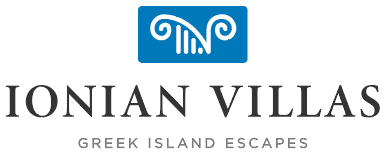The Ionian islands of Greece have some of the most beautiful, natural coastlines and crystal clear waters in southern Europe. The islands offer a diverse playground for both explorer and cushioned deckchair enthusiast. Say you are the one responsible for planning the family holiday or for trying to get a party of friends together –…
Author: admin
Our Paxos Wedding
Ever thought about getting married amongst the olive groves or on a beach looking out to the Ionian Sea? Is it your dream to have Greek musicians playing bouzouki whilst you dance the night away underneath the stars? Well we can help you make this happen especially as we know first-hand what it is like…
Escaping to Ithaca Needn’t Be an Odyssey
After the Trojan War it took Odysseus 10 eventful years to return to his Ithaca home. Reaching the end of his journey, Odysseus was taken from Kefalonia to Ithaca in a Phaeacian longboat. Seeing the Phaeacians returning to Kefalonia, Poseidon raised his trident and turned the boat and oarsmen to stone. Tzika House and the…
Villas with the Wow Factor
What boxes need ticking when you look for that special Greek island holiday? Most people look for: a modern villa with pool but one that feels Greek; the biggest and most dramatic sea views possible; seclusion but close to a village and beaches; privacy and tranquillity. All of our Ionian properties have one or more…
Share the Durrell Adventure
In Episode 5 of the latest series of The Durrells, the family are invited for dinner by some Italian friends. The beautiful Manor House was chosen as the filming location for this dinner. You too can be part of the Durrells’ adventure and have a special holiday escape on Corfu at The Manor House. The…
New Year Newsletter 2017
Our newsletter brings you Warm Wishes and a Few Things New for the New Year. Our office has some new family faces. Alex’s wife, Catherine, has joined our team. Catherine (Cat) has spent three years on Paxos as a Representative for Ionian Villas and Scott Williams. She has visited the other Ionian islands and will be…
25th March Celebrations on Ithaca
Greeks love to celebrate, be it their birthday or name day (γιορτη), religious holidays, bank holidays or national days. Whatever the celebration – Greek people celebrate to the full, throwing themselves into the spirit of the day! 25th March in Greece is a national holiday – to celebrate the start of the Greek Uprising/the Greek…
Carnival Season
Carnival season in Greece (“Apokries”) starts 3 weeks before Easter. Fancy dress processions through the streets, dancing groups and music bands. Bystanders throw confetti, streamers and sometimes firecrackers. Vathy Carnival Procession Clean Monday (“Katheri Leftera”) marks the beginning of Lent when meat, dairy and eggs are avoided by those who observe it. If the sun…
Best 4 Tips for Parking at Airports at the Ionian
Top Tips for Airport Parking Let’s face it: compared to the excitement, promise and glamour of almost all other aspects of preparing for a holiday, parking at the airport is probably the least attractive. But consider the problems that can arise when trying to park in any other situation. Unexpected difficulties can often arise and…
Winter Weather on Ithaca
This Blog was written by our Ionian Villas manager on Ithaca, Sue White. Sue lived on Kefalonia for 18 years and has now been living on Ithaca for 5 years. Sue is a taxi driver on Ithaca – one of twelve drivers. Sue looks after our clients and is able to give a valuable, personal insight into…





